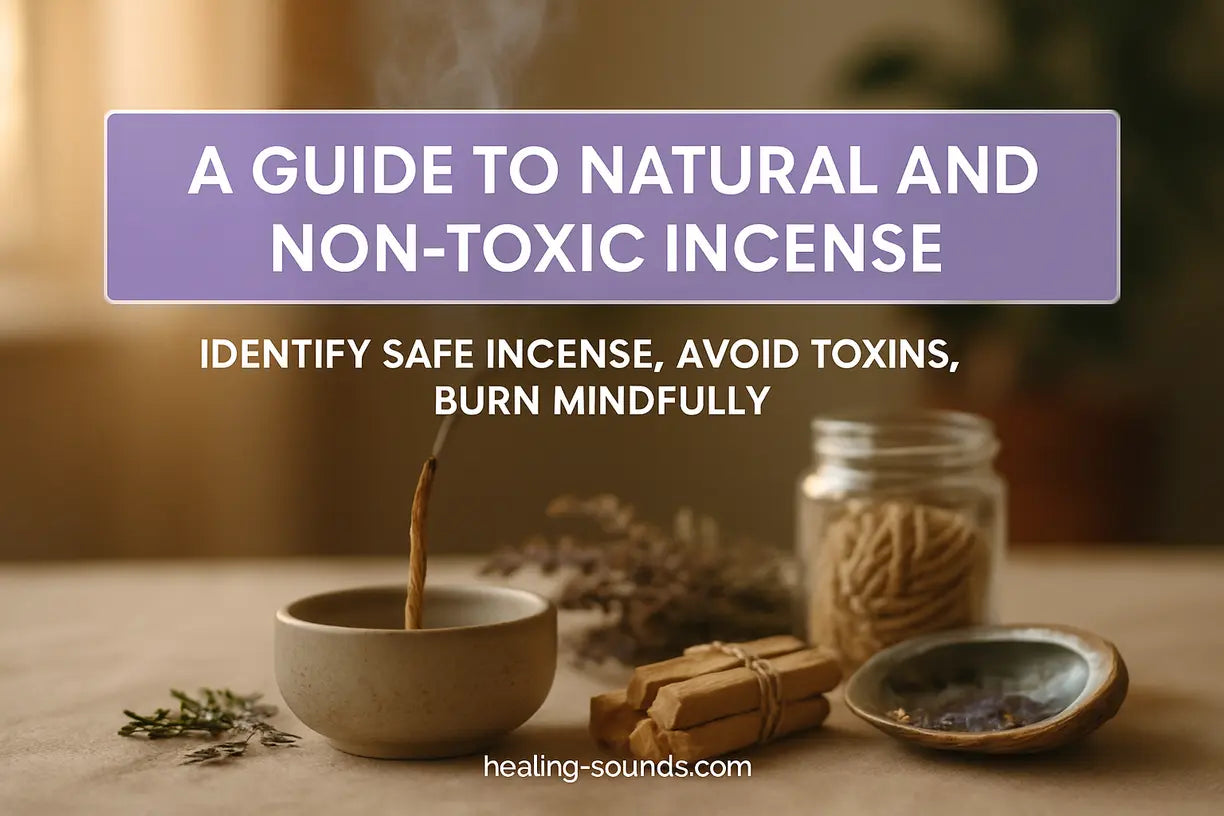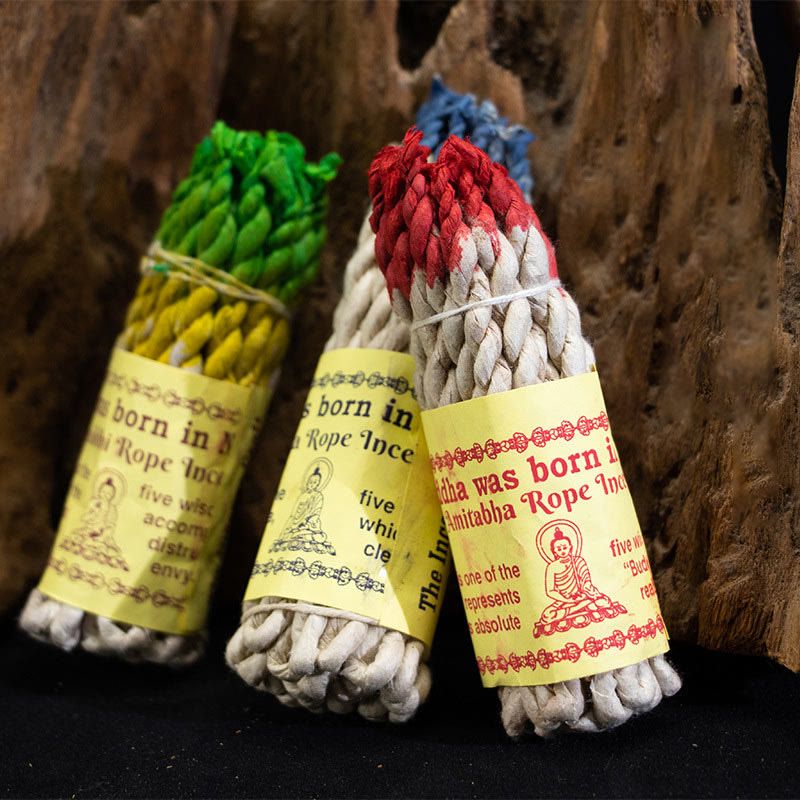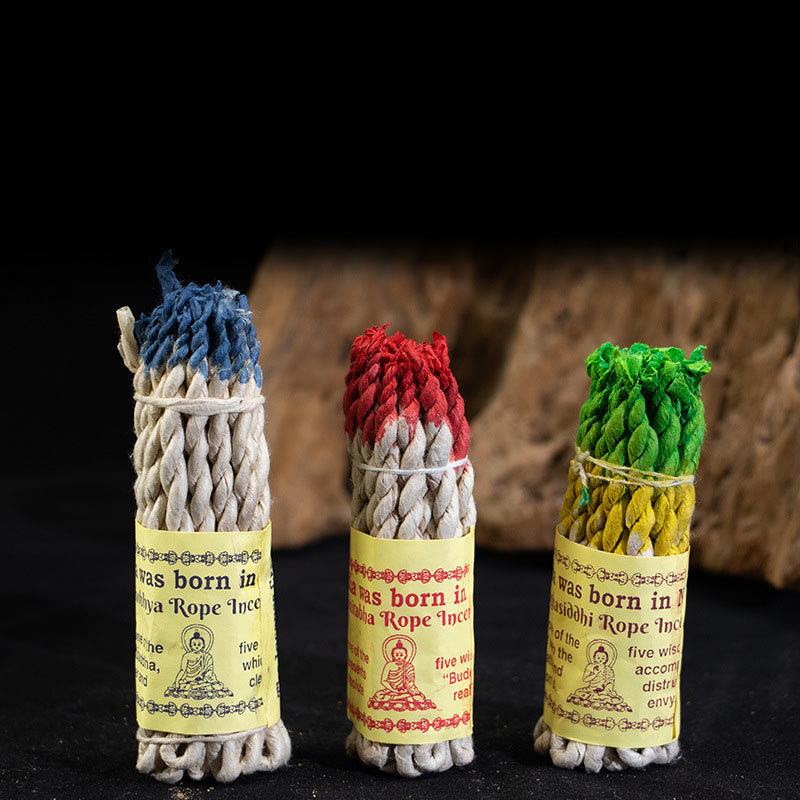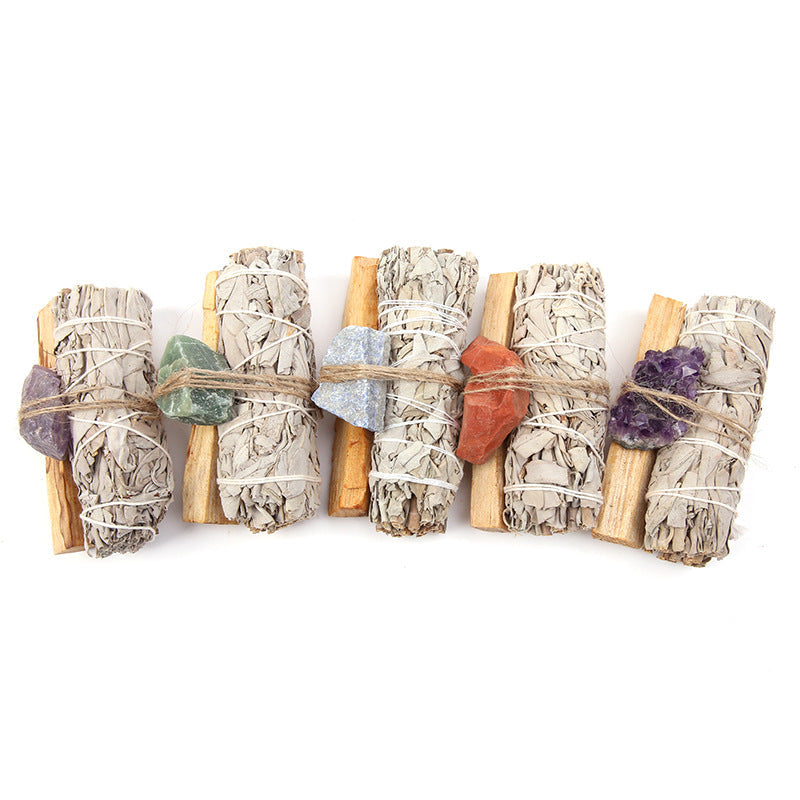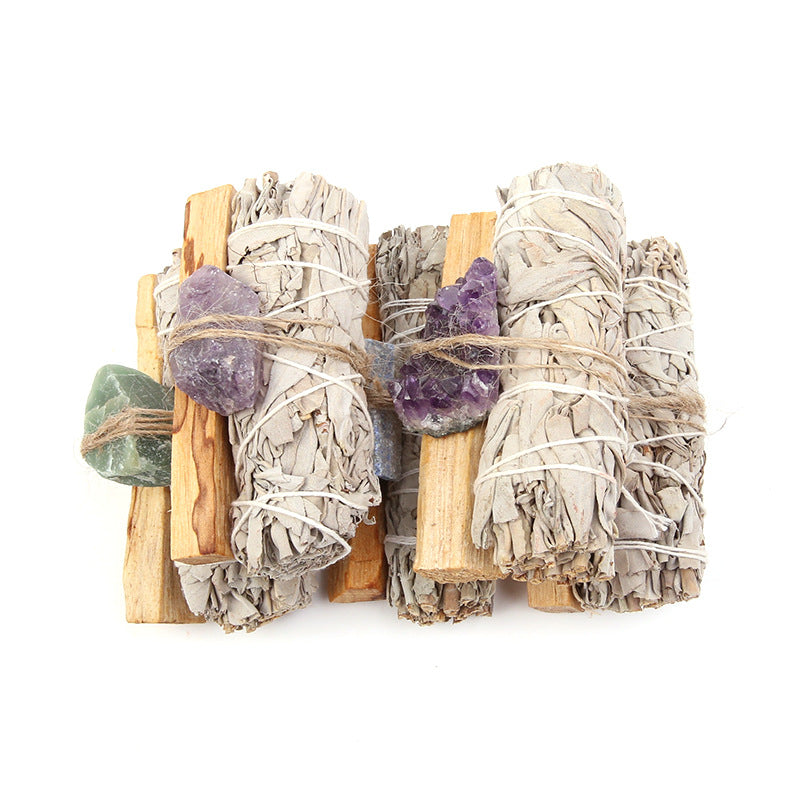Um zu Hause einen ruhigen, heiligen Ort zu schaffen, ist oft unser Geruchssinn gefragt. Seit Jahrhunderten wird Weihrauch bei Ritualen, Meditationen und zur einfachen Entspannung verwendet, um Räume zu reinigen und den Geist zu beruhigen. Doch je bewusster wir uns werden, was wir in unsere Häuser bringen, desto wichtiger wird die Frage: Verbessert oder verschlechtert unser Weihrauch die Luftqualität in unseren Räumen? Tatsächlich werden viele herkömmliche Räucherstäbchen mit synthetischen Duftstoffen und Chemikalien hergestellt, die beim Verbrennen Giftstoffe freisetzen können. Dieser Leitfaden ist für Sie, wenn Sie das wunderbare Aroma und die spirituelle Wirkung von Weihrauch genießen möchten, ohne Ihre Gesundheit zu gefährden. Wir erkunden die Welt des ungiftigen Weihrauchs und zeigen Ihnen, wie Sie natürliche, sauber brennende Optionen für Ihre Wellness-Rituale auswählen.
Sie erfahren, wie Sie versteckte Chemikalien erkennen, nach welchen reinen Inhaltsstoffen Sie suchen müssen und entdecken sichere, schöne Alternativen wie Kräuterweihrauch und Palo Santo . Begeben wir uns auf eine Reise, um Ihren Raum sicher und natürlich zu reinigen.
Was macht Weihrauch giftig? Häufige Inhaltsstoffe, die Sie vermeiden sollten
Der beruhigende Rauch eines herkömmlichen Räucherstäbchens kann leider mehr als nur einen angenehmen Duft verströmen. Viele Massenprodukte enthalten einen Cocktail aus synthetischen und potenziell schädlichen Substanzen. Zu wissen, was zu vermeiden ist, ist der erste Schritt zu einem saubereren, gesünderen Umgang mit Räucherstäbchen. Die Hauptschuldigen sind synthetische Duftstoffe, die beim Verbrennen flüchtige organische Verbindungen (VOCs) wie Benzol und Formaldehyd freisetzen können. Laut der US-Umweltschutzbehörde können diese Verbindungen zu einer schlechten Luftqualität in Innenräumen beitragen.
Hier sind die wichtigsten Inhaltsstoffe, die Sie beim Kauf von Räucherstäbchen unbedingt vermeiden sollten:
- Synthetische Duftöle: Oft einfach als „Duftstoff“ oder „Parfum“ bezeichnet, handelt es sich dabei um komplexe chemische Mischungen, die natürliche Düfte nachahmen sollen. Sie sind eine Hauptquelle für Luftschadstoffe in Innenräumen.
- Chemische Bindemittel und Beschleuniger: Manchmal werden Zutaten wie Holzkohle oder Kaliumnitrat verwendet, um das gleichmäßige und kontinuierliche Abbrennen des Räucherstäbchens zu unterstützen, sie können jedoch gesundheitsschädlichen Ruß und Emissionen erzeugen.
- Unbekannte Füllstoffe oder „Dipunks“: Bei minderwertigem Räucherstäbchen werden oft leere, brennbare Stäbchen („Dipunks“) verwendet, die in synthetische Duft- und Lösungsmittelmischungen getaucht werden. Eine vage Zutatenliste ist ein deutliches Warnzeichen.

Die Kennzeichen von natürlichem und ungiftigem Weihrauch
Nun zur guten Nachricht! Es gibt wirklich natürliches Räucherwerk , hergestellt aus reinen, pflanzlichen Zutaten, die seit Jahrtausenden sicher verwendet werden. Diese Optionen brennen sauber und setzen die authentischen, subtilen Aromen der Erde frei, ohne den chemischen Dunst. Wenn Sie nach ungiftigen Optionen suchen, suchen Sie im Wesentlichen nach Räucherwerk in seiner traditionellsten und unverfälschtesten Form.
Suchen Sie nach Produkten, die direkt aus diesen gesunden Zutaten hergestellt werden:
- Pflanzenharze: Weihrauch, Myrrhe, Kopal und Kiefernharz sind klassische Beispiele. Sie verströmen ein reichhaltiges, erdendes Aroma, wenn sie sanft erhitzt oder verbrannt werden.
- Aromatische Hölzer: Nachhaltig gewonnenes Palo Santo und Sandelholz werden für ihre reinigenden und beruhigenden Eigenschaften geschätzt.
- Kräuter und Gewürze: Getrockneter Lavendel, Salbei, Zeder, Zimt und Nelken können zu Räucherstäbchen gebündelt oder zu Pulver für Kräutermischungen gemahlen werden.
- Natürliche Bindemittel: Suchen Sie nach Bindemitteln aus pflanzlichen Gummis wie Makko (vom Tabu-no-ki-Baum) oder Gummi arabicum, die ungiftig sind und sauber verbrennen.

Unsere Top-Auswahl für ein reines, achtsames Ritual
Die Suche nach hochwertigem, ungiftigem Weihrauch kann überwältigend sein. Deshalb greifen wir oft auf traditionelle Formen zurück, die sich bewährt haben. Seil-Weihrauch, handgerollt aus aromatischen Kräutern und Naturpapier, ist ein perfektes Beispiel für eine sauber brennende und authentische Option für Ihren heiligen Ort.
Natürliches Nepal-Räucherseil für Heilungs- und Meditationsrituale
$17.90
Wählen Sie sauber brennendes Nepal-Räucherseil aus Himalaya-Kräutern für sanftes, ungiftiges Räuchern und achtsame Rituale.
Produkt entdeckenEntdecken Sie verschiedene Arten von natürlichem Weihrauch
Die Welt des natürlichen Weihrauchs ist vielfältig und wunderschön und bietet eine Vielzahl von Formen und Düften für jede Absicht und Vorliebe. Wenn Sie über typische Stäbchen hinausgehen, eröffnen sich vielfältige Erlebnisse, vom holzigen Rauch des Palo Santo bis zum zarten Aroma handgerollter Kräutermischungen.
Kräuter-Räucherstäbchen und Räucherstäbchen
Kräuterräucherwerk wird oft in Form von Räucherstäbchen angeboten – Bündel getrockneter Kräuter wie weißer Salbei, Zeder oder Lavendel, die zusammengebunden sind. Sie werden verbrannt, um einen Raum von negativer Energie zu reinigen. Es gibt auch lose Kräutermischungen, die auf einer Kohlescheibe verbrannt werden – für ein kraftvolles, rauchiges Ritual.
Palo Santo Holz
Palo Santo , auch als „heiliges Holz“ bekannt, stammt aus Südamerika und wird für seinen süßen, zitronigen und holzigen Duft geschätzt. Es wird traditionell verwendet, um negative Energie zu beseitigen, Ruhe zu fördern und die Kreativität zu steigern. Um diese heilige Ressource zu schützen, ist es wichtig, Palo Santo zu wählen, das nachhaltig von natürlich umgestürzten Bäumen geerntet wurde .
Natürliche Räucherstäbchen und -kegel
Es gibt hochwertige natürliche Räucherstäbchen und -kegel! Der Schlüssel liegt in einer transparenten Zutatenliste. Achten Sie auf Marken, die ausdrücklich angeben, dass sie 100 % pflanzliche Rohstoffe, ätherische Öle (keine Duftöle) und natürliche Bindemittel wie Makko-Pulver verwenden.

Sichere Verbrennungspraktiken für ein gesundes Zuhause
Selbst bei den natürlichsten Räucherstäbchen sind sichere Praktiken unerlässlich, um eine gute Luftqualität zu gewährleisten und Brandgefahren vorzubeugen. Beim Verbrennen von Gegenständen in Innenräumen wird Feinstaub freigesetzt, daher ist Achtsamkeit unerlässlich. Sorgen Sie vor allem für ausreichende Belüftung . Öffnen Sie ein Fenster oder eine Tür, damit frische Luft zirkulieren und der Rauch entweichen kann. So verhindern Sie Rauchbildung und stellen sicher, dass Sie das Aroma genießen und nicht eine dichte Rauchwolke einatmen.
Verwenden Sie immer einen geeigneten, hitzebeständigen Räuchergefäß oder -halter. Dieser fängt nicht nur die Asche auf und schützt Ihre Oberflächen, sondern sorgt auch dafür, dass das Räucherwerk stabil steht und nicht wegrollt. Bewahren Sie brennendes Räucherwerk außerdem außerhalb der Reichweite von Kindern und Haustieren auf, wenn es in der Nähe von brennbaren Gegenständen wie Vorhängen brennbar ist.
[Sammlungs-Schieberegler]
Wesentliches für einen sicheren und heiligen Ort
$55.90
$79.90
Halten Sie Oberflächen sauber und verbrennen Sie natürliches Räucherwerk sicher mit diesem eleganten Räuchergefäß aus Keramik von Three Stones für Rituale zu Hause. Mehr erfahren ➔
$28.90
$41.90
Kombinieren Sie ethisch gewonnenes Palo Santo mit einem Heilkristall für ein nachhaltiges, ungiftiges Räucherritual, das Energie reinigt. Mehr erfahren ➔
DIY-Rezept für ungiftiges Räucherwerk
Für alle, die gerne selbst Hand anlegen, ist die Herstellung einer eigenen losen Räuchermischung eine einfache und lohnende Methode, um 100 % reine Zutaten zu gewährleisten. Eine lose Räuchermischung wird nicht zu Stäbchen oder Kegeln gepresst, sondern auf eine heiße Kohlescheibe in einem feuerfesten Behälter gestreut, um ihr Aroma freizusetzen. Diese Methode ermöglicht die vollständige Kontrolle über Duft und Zutaten.
Einfache beruhigende lose Räuchermischung:
- 2 Teile Sandelholzpulver: Erzeugt eine cremige, erdende Basis.
- 1 Teil Weihrauchharztränen: Zur Reinigung und spirituellen Verbindung.
- 1 Teil getrocknete Lavendelknospen: Fördert Entspannung und Ruhe.
- Optional: Eine Prise gemahlener Zimt für Wärme oder ein paar zerstoßene Zedernblätter zur Reinigung.
Anwendung: Mischen Sie die Zutaten einfach in einer kleinen Schüssel. Zünden Sie eine Kohlescheibe (unter Beachtung der Anleitung) in einer Keramikschale oder einem Kessel mit Sandboden an. Sobald die Scheibe heiß und glühend ist, streuen Sie eine kleine Prise Ihrer losen Räuchermischung darauf und genießen Sie den duftenden Rauch.
Fazit: Beschreiten Sie einen reineren Weg zum Frieden
Die Wahl ungiftiger Räucherstäbchen ist ein Akt der Selbstfürsorge und des Respekts für Ihr Zuhause. Indem Sie reine, pflanzliche Inhaltsstoffe bevorzugen und synthetische Zusatzstoffe vermeiden, können Sie die alte Tradition der Aromatherapie und Energiereinigung ohne gesundheitliche Bedenken voll und ganz genießen. Ob handgerollte Natur-Räucherstäbchen , nachhaltig gewonnenes Palo Santo oder Ihre eigene Kräutermischung – Sie entscheiden sich bewusst für Ihr Wohlbefinden. Schaffen Sie einen wahrhaft heiligen Ort, der nicht nur himmlisch duftet, sondern auch Ihre Gesundheit und Ihren spirituellen Weg unterstützt. Entdecken Sie ihn mit Zuversicht und atmen Sie frei.
Häufig gestellte Fragen zu ungiftigem Räucherwerk
Ungiftiges Räucherwerk besteht aus 100 % natürlichen, pflanzlichen Materialien wie Harzen, Hölzern, Kräutern und Gewürzen und enthält keine synthetischen Duftstoffe, chemischen Bindemittel oder Füllstoffe. Um es zu identifizieren, lesen Sie die Zutatenliste sorgfältig durch . Achten Sie auf spezifische Pflanzennamen (z. B. Weihrauch, Sandelholz, Lavendel) und vermeiden Sie vage Begriffe wie „Duftstoff“. Vertrauen Sie Marken, die transparent über ihre Beschaffungs- und Produktionsmethoden informieren.
Ja, natürliche Räucherstäbchen sind in Innenräumen deutlich sicherer zu verbrennen. Sie setzen keine schädlichen flüchtigen organischen Verbindungen (VOCs) wie Formaldehyd und Benzol frei, die in Räucherstäbchen mit synthetischen Duftölen häufig vorkommen. Allerdings reizt Rauch die Lunge, daher wird empfohlen, auch natürliche Räucherstäbchen in einem gut belüfteten Raum mit geöffnetem Fenster zu verbrennen.
Die Brenndauer variiert je nach Art und Dicke, die meisten natürlichen Räucherstäbchen brennen jedoch 30 bis 60 Minuten. Der Rauch von natürlichem Räucherwerk ist oft leichter und reiner. Sein Duft ist authentischer und subtiler – er erinnert an brennendes Holz oder Kräuter – und nicht an den schweren, parfümierten Geruch synthetischer Duftstoffe. Räucherstäbchen wie Seile oder Palo Santo erzeugen möglicherweise weniger Rauch als herkömmliche Stäbchen.
Vermeiden Sie bei der Auswahl von Räucherwerk Zutatenlisten mit den Begriffen „Duft“, „Parfum“, „Duftöl“ oder „getaucht“. Diese Begriffe weisen auf synthetische Chemikalien hin. Seien Sie auch vorsichtig bei Räucherwerk mit Holzkohle oder unbenannten chemischen Beschleunigern, da diese gesundheitsschädlichen Ruß und Emissionen erzeugen können. Halten Sie sich an Produkte mit klaren, einfachen Zutatenlisten, die aus echten Pflanzen bestehen.
Absolut! Am einfachsten ist es, eine lose Räuchermischung herzustellen. Ein einfaches Rezept: Mischen Sie zwei Teile Sandelholzpulver, einen Teil Weihrauchharz und einen Teil getrocknete Lavendelblüten in einer Schüssel. Streuen Sie einfach eine kleine Menge auf eine heiße Kohlescheibe in einer feuerfesten Schale und schon verströmt sie ein herrliches, natürliches Aroma.

